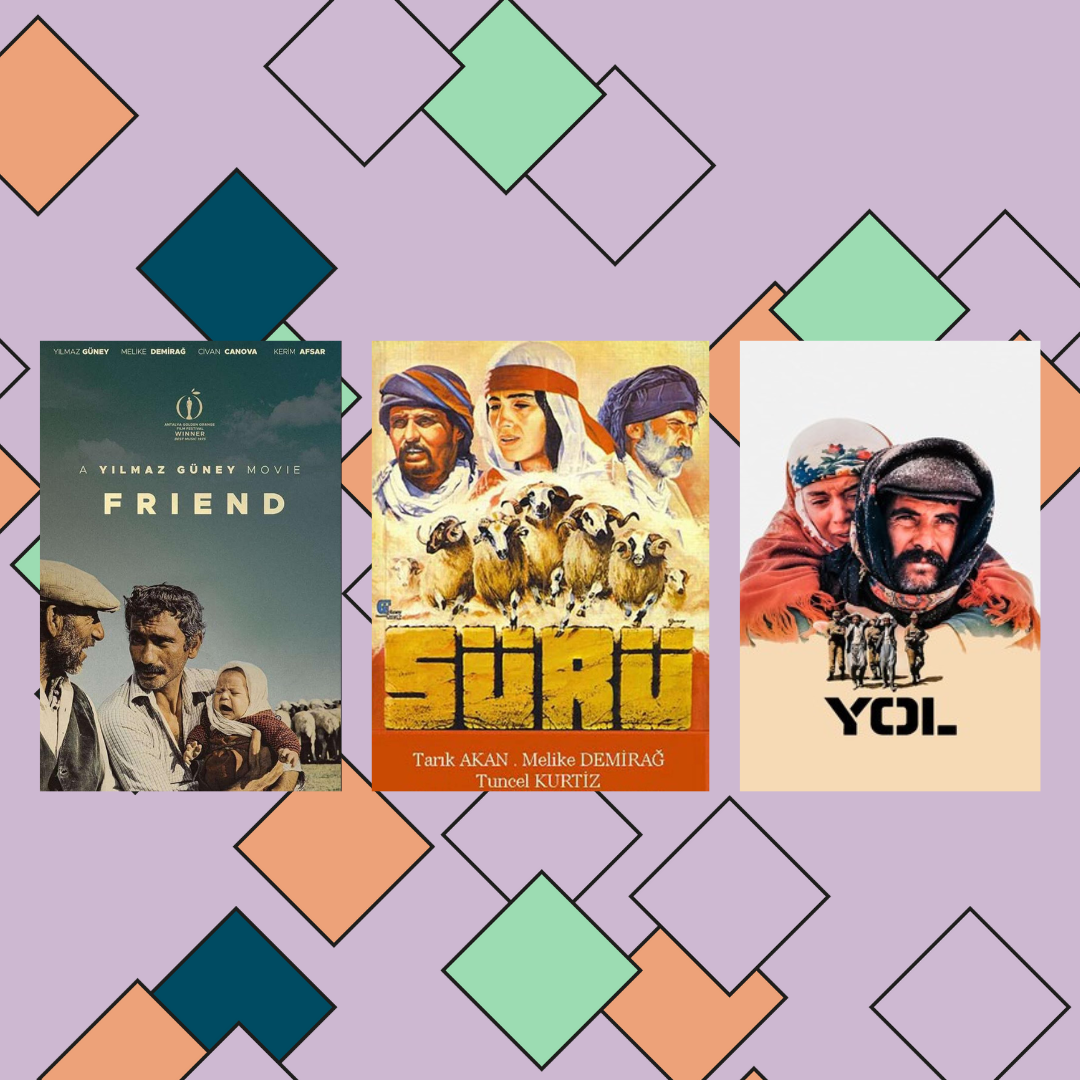
Kurdistan in VHS – The postcolonial questions of Kurdish films
“In an alienated world, culture – obviously – is a deformed and deforming product. To overcome this it is necessary to have a culture of and for the revolution, a subversive culture capable of contributing to the downfall of capitalist society”
In 1970, Fernando Solanas and Octavio Getino begin their essay Towards a Third Cinema with these words and create one of the most important contributions to the theoretical fundamentals of anticolonial and anti-capitalist cinema. In their essay, they describe the developments in Latin American guerrilla film and call for an emancipatory cultural practice that understands art as a part of resistance. Within just a few decades the Third Cinema develops into a global film movement of colonised societies. The questions of resistance within art and cultural identity outside of the colonial gaze are topics which, for many racialized subjects, have become core debates and are found in numerous examples of postcolonial literature, theory and art. In his artistic work, the Kurdish director Yilmaz Güney also picks up the question of anticolonial resistance in art, and thus also the questions of postcolonialism – or to phrase it in the words of Stuart Hall, the question of “what we really are; or rather – since history has intervened – what we have become”. Yet, this also did not happen overnight. Güney as well as Kurdish cinema should much more be understood as a permanent negotiation of cultural identity and its’ potential as a method of resistance.
Born in Prison – Yilmaz Güney and Anticolonial Cinema
They should have fought about it beforehand. This was recounted by the Turkish actor Tarik Akan almost thirty years later in an interview. He probably already knew it before the meeting. This is how it comes across anyway, when Akan describes going to prison. The director was also already there waiting for him, who, from his cell, can only give him the instructions with which his film is to be made. Akan describes how they sit across from each other and he must tell the great Kurdish director Yilmaz Güney that he misunderstood his own protagonist. How he cannot be robbed of his tears when he is grieving his wife. At the end it is kept in, the scene whose sensitivity leaves traces in a film that tries to articulate the heterogeneity of the colonial experience in the omnipresence of imprisonment.
He stretched bed sheets over the walls of his prison cell and watched his film bit by bit with the other prisoners. The conditions in which the films were made are hard to imagine. As a political prisoner after the military coup of 1980 under Kenan Evren, Yilmaz Güney went from being a political activist and nationally recognised film star to a prisoner. His films were banned and burned. Not only those that he directed, but also his work as an actor was to be made no longer accessible for the public. Through his wife – who smuggled eleven of his films abroad – and through the passing on of VHS-tape shelves of Kurdish and Turkish ‘Gastarbeiter:innen’ (foreign workers) in Europe, his work was kept and found its way back to a broad audience. In 1983, Güney managed to escape to Europe. The Ugly King – as he called himself – established the Kurdish Institute in Paris and lived there until his early death in 1984. Many films that were planned during this time were, therefore, no longer able to be completed. For a long time, Kurdish cinema stayed quiet. It took twenty years until his influence once again made it into cinema. A new generation of Kurdish directors was established, who – just like Güney – positioned themselves against the colonial gaze and continued the negotiation of Kurdish identity. Directors such as Ayse Polat and Hiner Saleem dedicated themselves to the questions of identity, oppression and subversion in cinema.
Against the Colonial Gaze
This was not always an easy endeavour. Through centuries-long oppression, the question of what it even is to be Kurdish became a concern which, not by accident, is reminiscent to that of Franz Fanon’s negotiations in Black Skin, White Masks (1952). Here too, we find the task of being able to view identity not in the absence of colonialism, and yet simultaneously not reproducing it in the colonial gaze. Yilmaz Güney’s cinematography offers up an example of internalised colonialism. In line with this, it is argued by Tim Kennedy in Cinema Regarding Nations (2007) that Güney’s early works are infused with the narrative of the under-developed Kurd. Trapped in the logic of representation, Güney sees the problematic of the Kurds and as such, in films such as Arkadas (1975) or Sürü (1979), he reproduces the image of the feudal and educationally deprived region of Kurdistan in Turkey. In doing so, Atatürk’s vision is spun further out and prevents anti-hegemonial perspectives of Kurdish identity. It is not until his later works that Güney becomes a film maker of anti-colonial resistance. His film “Yol” (1982) would become an international success and today remains to be considered one of the most important films in Kurdish cinema. Güney himself saw this as the turning point that allowed him to become an anti-colonial film maker and, as such, made him a part of the Third Cinema.
In his essay Cultural Identity and Diaspora (1993) Stuart Hall also engaged in the differing perspectives through which cultural identity can be seen. Along the lines of Caribbean film, Hall argues that the image of identity as a fixed and unchanging frame of reference for colonised subjects does not allow cultural identity to actually be articulated. In contrast to this, Hall establishes a further possibility that tries not to articulate a re-telling of a culture from pre-colonial times, instead concerning itself with what has resulted from the impact of the colonial experience. Thus, for Hall the question of cultural identity can no longer be seen as an exact and universally applicable collective experience, rather it is defined much more through the “question of becoming as well as being”, which enables the colonised subject to see themselves in constant change.
“The Question of Becoming as Well as Being
This understanding can also be seen in the Kurdish history of oppression. It is much more a question of articulation and production than the illustration of Kurdish life, and this became a balancing act through the structural experience of assimilation and oppression. Discourses around which language should be used or who can even make Kurdish films became questions that artists had to engage with. Contrary to a simplification or a romanticised depiction of oppression, it becomes a process which cannot take cultural identity in its artistic production as a given. The negotiations of which language, clothing, as well as places and histories are used led to the creation of many heterogeneous films that renounce the naturalisation of identity. Films like those from Kurdwin Ayub, who said in an interview that while she was preoccupied with herself, she quickly lost interest in playing sad migration stories. Here too, the fragmentary practices and discourses are visible that keep Kurdish identity alive and are prevented from being declared as artefacts of a pre-colonial culture. Here again Fanon can be found, when in Black Skin, White Masks he writes:
“I am not a prisoner of History. I should not seek there for the meaning of my destiny […] In the world through which I travel, I am endlessly creating myself. I am a part of Being to the degree that I go beyond it” (1952).
In this way the postcolonial occupation with art enables a negotiation that positions itself permanently against the colonial gaze, and in doing so can actually be and become a form of resistance.

